oint Lay has a housing problem. The community is home to around 350 people, says Taġiuġmiullu Nunamiullu Housing Authority (TNHA) board member Sophie Tracey, but the community only has about seventy-five homes. In many homes, two or even three generations are living under one roof.
It’s one of the most densely populated communities in the state, says Griffin Hagle-Forster, CEO of TNHA, one of fourteen regional housing authorities in Alaska. TNHA operates as a consortium for six villages in the North Slope region, receiving federal Housing and Urban Development (HUD) funding to build houses for the communities it serves.
“Point Lay is, of the communities we serve, by far the most overcrowded. The definition [of overcrowded, by HUD] is one person or more per room. Severely overcrowded is 1.5 persons per room. In Point Lay, about three out of four houses there are overcrowded, with most of those considered severely overcrowded,” Hagle-Forster says.
Using a combination of grants, COVID-19 relief funding, and assistance from the Denali Commission to clear asbestos from three existing structures, TNHA is building three duplexes in the community, providing new houses for six families.
Funding is relatively simple, though, compared to the challenge of transporting construction materials all the way to the Chukchi Sea coast, about 200 miles southwest of Utqiaġvik.
Lynden Transport trucked the materials from Anchorage to Deadhorse, then Lynden Oilfield Services’ PistenBully Snowcats towed the materials to Point Lay.
Scott Bailie
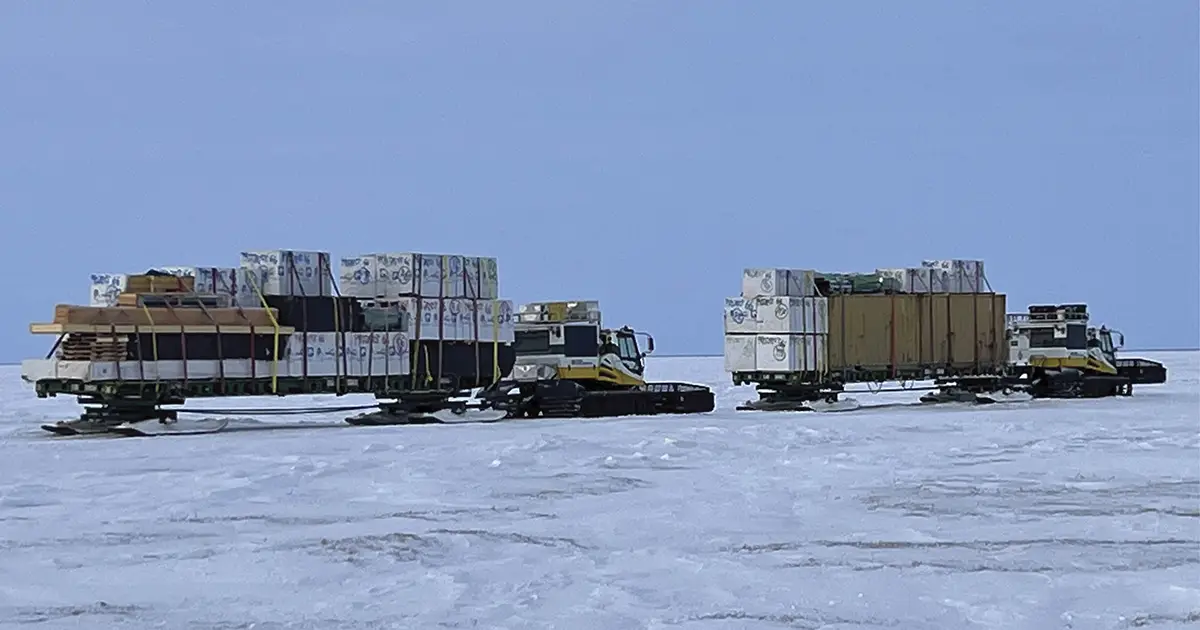
But overland was the right choice in this instance because it allowed the materials to get to Point Lay in March, sooner than waiting for a summer barge to arrive. Although the project had been in the works for about five years, Hagle-Forster says several steps—such as environmental reviews, access and ownership issues, and other tasks—had to be ironed out before ordering materials. All the while, the clock was ticking on the COVID-19 relief funding set to be used for the project.
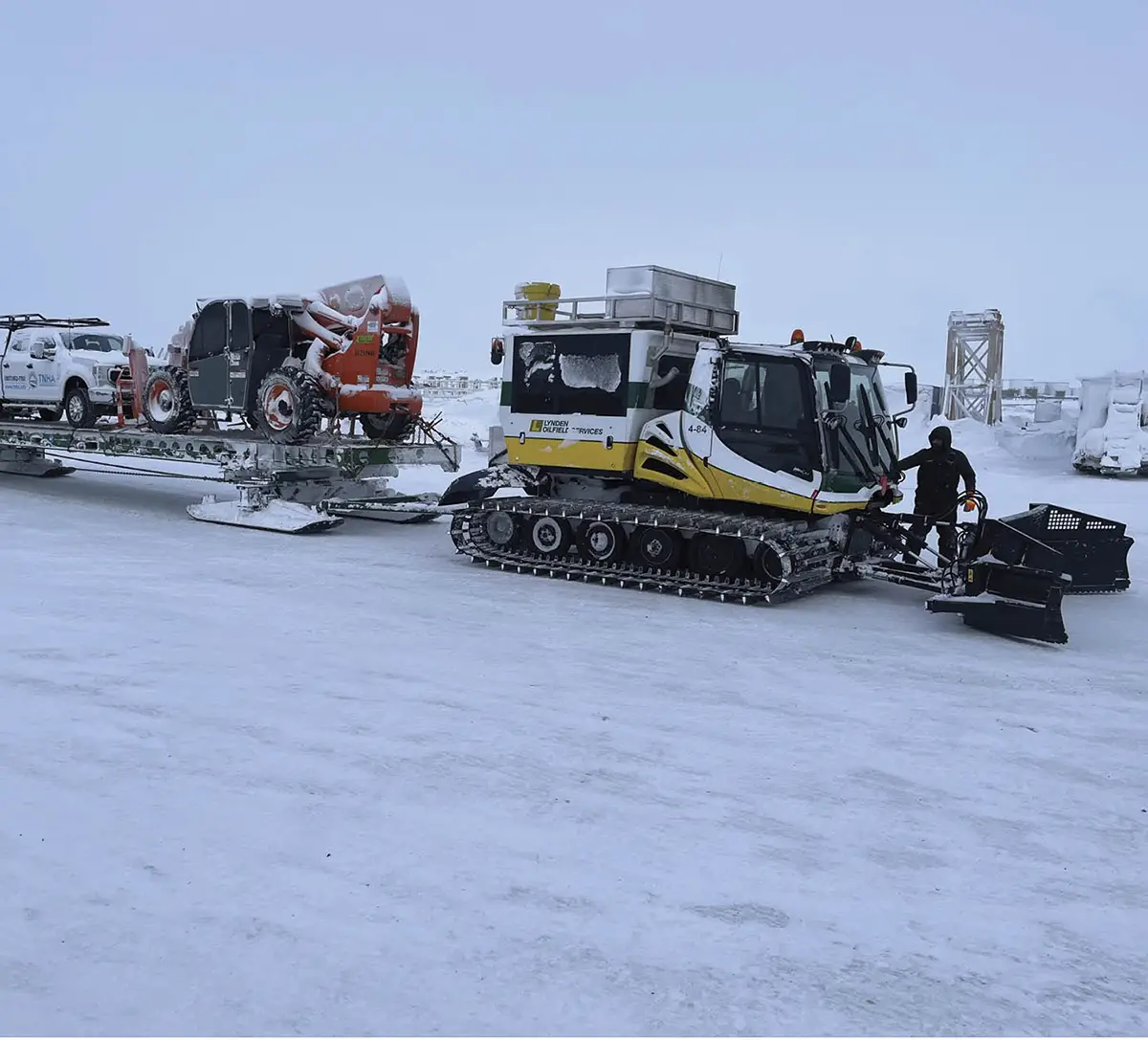
Scott Bailie
Moving the materials any other way might have saved money, but it would have delayed the start of construction until August, which is late in the season for the northern community.
“I hope the drivers got some good podcasts downloaded,” Hagle-Forster says with a laugh.
Some of the freight was difficult to get to the building site in other ways: septic tanks and foundation beams longer than 50 feet are a cumbersome load. But towed behind the PistenBully, size was not an issue.
Taġiuġmiullu Nunamiullu Housing Authority
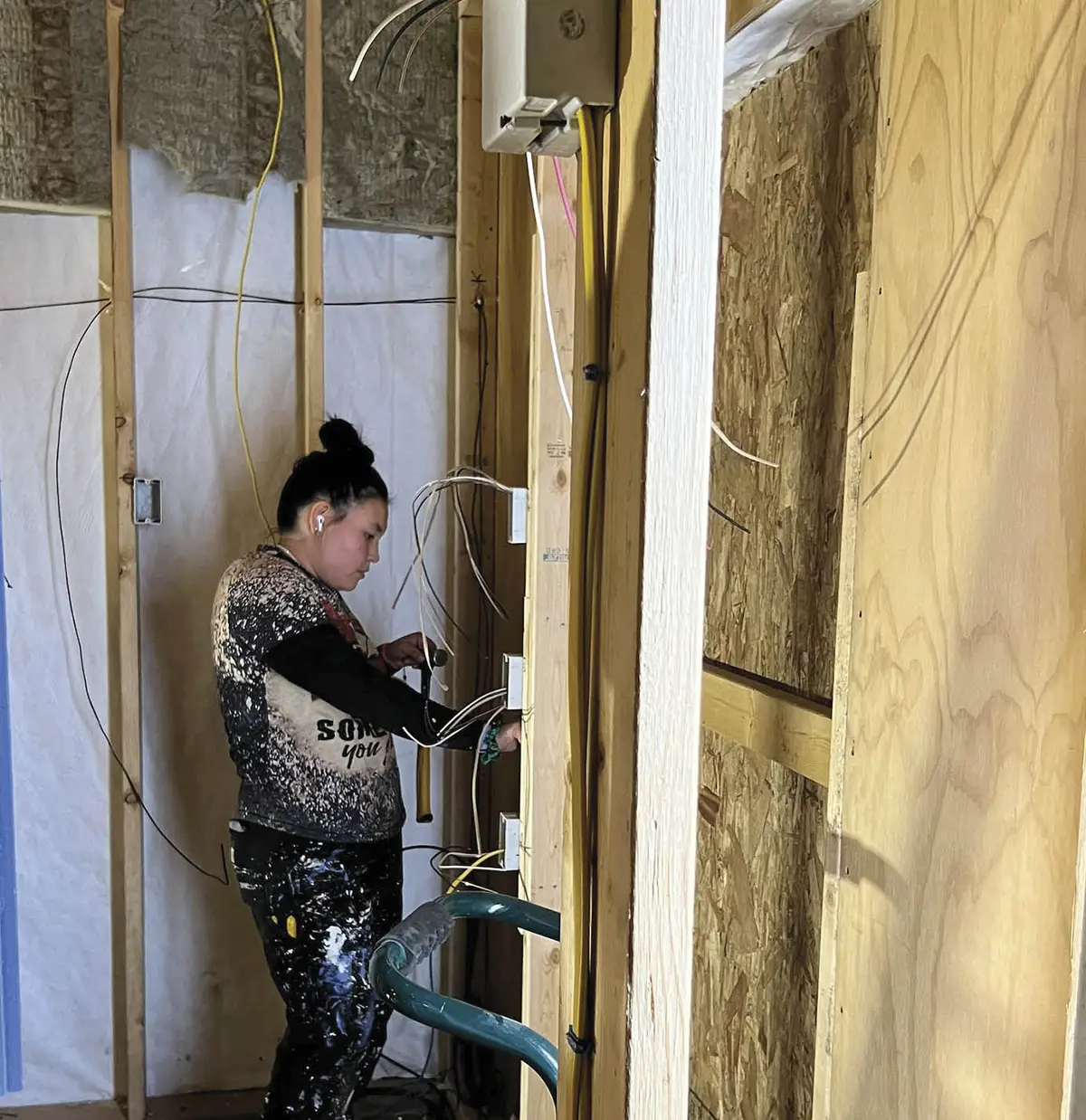
With the spring arrival of the materials, Hagle-Forster says TNHA’s crew and contractors were able to complete site remediation—which included asbestos removal, funded by the Denali Commission—and level the ground with fill. One duplex shell is complete, and construction has taken off, with occupancy expected in late 2024.
The original North Slope Borough School District school was built after that move with funding from the US Bureau of Indian Affairs. Over time the school deteriorated, and the new Kali School, bearing the Iñupiaq name for the village (which means “mound”) was built. The original school building and the teacher housing behind it were condemned.
Taġiuġmiullu Nunamiullu Housing Authority
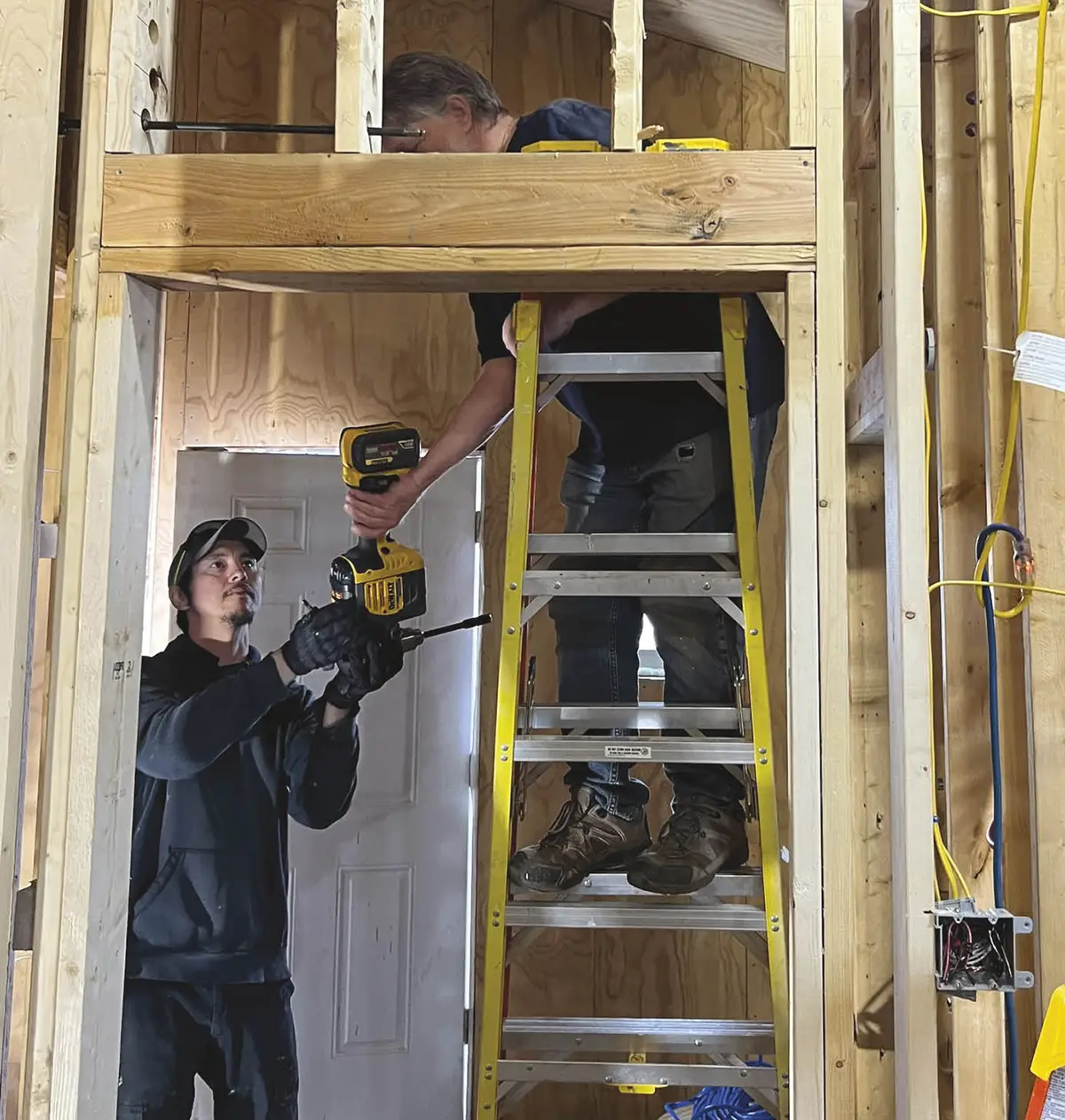
“These buildings are not safe for habitation, yet there are few other options,” the comprehensive plan states.
“In one apartment with a family of five, you could see outside. The roof was disconnected from the walls. It was really bad conditions,” Tracey says.
“Every year, more mothers are having children; we’re only growing,” she says.
For some families, having three generations under one roof is just too much. Even substandard housing, such as the former school, becomes a consideration.
Taġiuġmiullu Nunamiullu Housing Authority
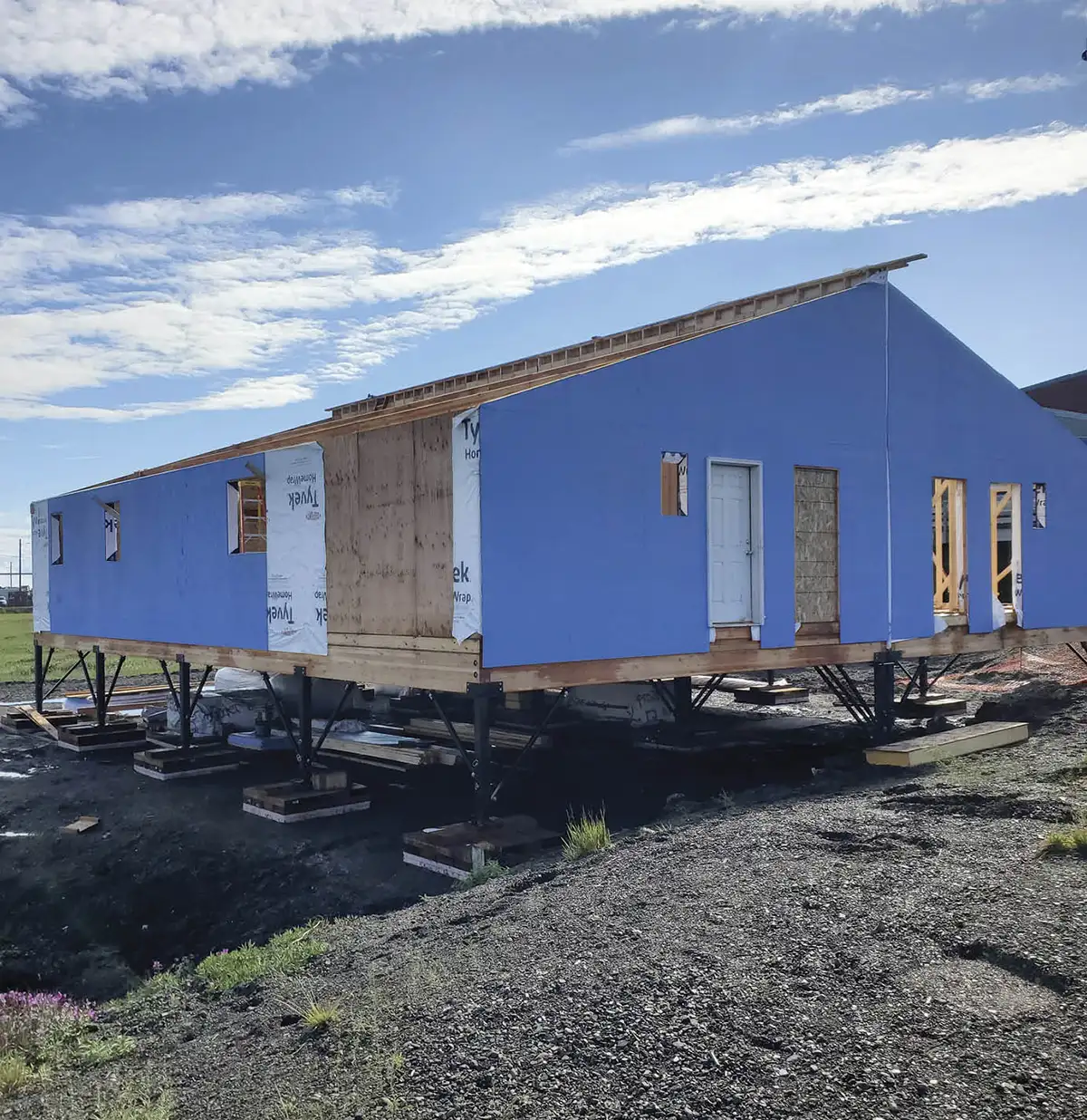
Tracey says the new housing, with three bedrooms, won’t be restricted to families of four. But it’s not guaranteed that the displaced residents of the former school will be living in the new duplexes. Point Lay residents who are on a waitlist for housing will be contacted first, Hagle-Forster says.
Taġiuġmiullu Nunamiullu Housing Authority

Tracey hopes that Cully Corporation, the Alaska Native village corporation for Point Lay, can assist residents in getting more houses built.
“Out of hundreds of people, that’s going to help six families; it’s not going to make a dent in what we need,” Tracey says. “I do hope in the near future is that our corporation can work with the community so we can get more housing; we have one of the highest homelessness rates, period—people wishing they could have their own housing, instead of having to move from one family to another just to have a bed to sleep in.”
“We try to keep it really simple. One of the factors we have to think about is, these homes are 500 miles from the nearest Home Depot,” Hagle-Forster says. “We specifically select these mechanical systems for reliability above all.”
The twist, Hagle-Forster says, is beneath the floor. The foundation can be adjusted, so if permafrost degrades one corner of the lot, the home can be jacked up in that area and adjusted to keep it level. And instead of pilings extending into the ground, they’re on a large sled, so if the community relocates, the structures will be easier to move.
Point Lay rests on permafrost that’s becoming less permanent every year due to climate change. To plan ahead for potential relocation, the village received $5 million in 2022 from the federal government.
Taġiuġmiullu Nunamiullu Housing Authority

“In 2008 or 2009, when you went under my house, you could jump as high as you can and barely touch the bottom [of the house],” Tracey says.
About five years ago, she and her husband used some low-grade gravel to fill up the area under their house, filling it to the point that “you had to duck to get under,” Tracey says. Now, the ground beneath her home has subsided to the point that you have to jump high to reach the floor of the home again.
Taġiuġmiullu Nunamiullu Housing Authority

Hagle-Forster says TNHA will build five more units in 2024 from one side of the Arctic Ocean coast to the other: a duplex in Kaktovik, a duplex in Nuiqsut, and a single-family house in Wainwright. The structures will be similar to those built in Point Lay, on adjustable and movable foundations. Instead of hauling on sleds, though, Hagle-Forster says for these three projects the Alaska Air National Guard will help transport the materials on a cargo plane as part of an Innovative Readiness Training program mission.